La Crosse Technology WS-9046U Handleiding
La Crosse Technology
Weerstation
WS-9046U
Bekijk gratis de handleiding van La Crosse Technology WS-9046U (28 pagina’s), behorend tot de categorie Weerstation. Deze gids werd als nuttig beoordeeld door 23 mensen en kreeg gemiddeld 4.9 sterren uit 12 reviews. Heb je een vraag over La Crosse Technology WS-9046U of wil je andere gebruikers van dit product iets vragen? Stel een vraag
Pagina 1/28

R
Contents
Language Page
English 1
Français 34
Spanish 69
WS-9046U
Wireless 433 MHz
Radio-controlled Weather Station
Instruction Manual
TIME
MOON
INDOOR
OUTDOOR
WIND
GUST
RH
%
RH
%
mph
bft
FORECAST
HUMIDITY
HUMIDITY
DATE
WWVB
FCC ID: OMO-01RX (Receiver), OMO-01TX (transmitter)
FCC DISCLAIMER
THIS DEVICE COMPLIES WITH PART 15 OF THE FCC RULES.
OPERATION IS SUBJECT TO THE FOLLOWING TWO
CONDITIONS:
1. THIS DEVICE MAY NOT CAUSE HARMFUL INTERFERENCE,
AND
2. THIS DEVICE MUST ACCEPT INTERFERENCE RECEIVED,
INCLUDING INTERFERENCE THAT MAY CAUSE UNDESIRED
OPERATION.

TABLE OF CONTENTS
Topic Page
Inventory of Contents ditional Equi/Adpment 3
About WWVB 4
Quick Set-Up Guide 4
Detailed Set-Up Guide
Battery installation 6
Program Mode
Program Sequence and Default Settings 7
Function Keys 7
Setting the LCD Contrast 8
Setting the Time Zone 8
Daylight Saving Time Setting 9
Radio-controlled Time Setting 9
12/24-hour Time Setting 10
Setting the Time 10
Setting the Year, Day and Month 11
Setting the Snooze 12
Setting the Temperature Format 13
Setting the Unit of Rainfall 13
Setting the Forecast Sensitivity 14
Features
Weather Forecast Icons and Tendency Arrows 16
Indoor Temperature, Humidity, & Comfort
Level Indicator 17
Outdoor Temperatures and Humidity 17
Minimum & Maximum Records (Indoor,
Outdoor, & Resetting) 17
Moon Phase 18
Current, minimum and maximum Dew Point 19
P.1
GB P.2 GB
P.3
GB P.4 GB
Topic Page
Wind speed, wind chill and minimum and maximum 19
Beaufort Scale 19
Rainfall measurement 22
Time Alarm 24
Mounting 25
Troubleshooting 29
Maintenance & Care 30
Specifications 30
Warranty Information 32
INVENTORY OF CONTENTS
1. The WS-9046U weather station (Figure 1).
2. One TX8U remote temperature/humidity sensor (Figure 2).
3. One TX15U wind speed sensor (Figure 3).
4. Mounting hardware
5. Instruction manual and warranty card.
OPTIONAL SENSOR (PURCHASE SEPERATELY)
Rain Sensor for rainfall information
ADDITIONAL EQUIPMENT (not included)
1. Three fresh AA 1.5V batteries for the indoor weather station.
2. Two fresh AA 1.5V batteries for the remote temperature/humidity
sensor.
(The remote temperature/humidity sensor powers the wind speed
sensor and the rainfall sensor so no batteries are required.)
3. One Philips screwdriver for mounting.
ABOUT WWVB (Radio Controlled Time)
The NIST (National Institute of Standards and Technology-Time and
Frequency Division) WWVB radio station is located in Ft. Collins,
Colorado, and transmits the exact time and date signal continuously
throughout the United States at 60 kHz. The signal can be received up
to 2,000 miles away through the internal antenna in the Weather Station.
However, due to the nature of the Earth’s Ionosphere, reception is
very limited during daylight hours. The weather station will search for
a signal every night when reception is best. The WWVB radio station
derives its signal from the NIST Atomic clock in Boulder, Colorado. A
team of atomic physicists is continually measuring every second, of
every day, to an accuracy of ten billionths of a second per day. These
physicists have created an international standard, measuring a second
as 9,192,631,770 vibrations of a Cesium-133 atom in a vacuum. For
more information on the atomic clock and WWVB please see the NIST
website at http://www.boulder.nist.gov/timefreq/stations/wwvb.htm.
QUICK SET-UP GUIDE
Hint:
Use good quality Alkaline Batteries and avoid rechargeable
batteries.
1. Have the indoor weather station, remote temperature/humidity
sensor and wind speed sensor 3 to 5 feet apart.
2. Insert the telephone plug (RJ-11) from the wind speed sensor into
the receptacle on the remote temperature/humidity sensor.
3. Insert the telephone plug (RJ-11) from the rain sensor into the
receptacle on the remote temperature/humidity sensor (optional;
sold separately)
4. Batteries should be out of both the indoor weather station and remote
temperature/humidity sensor units for 10 minutes.
5. Place the batteries into the remote temperature/humidity sensor
rst then into the indoor weather station.
6. DO NOT PRESS ANY BUTTONS FOR 15 MINUTES.
TIME
MOON
INDOOR
OUTDOOR
WIND
GUST
RH
%
RH
%
mph
bft
FORECAST
HUMIDITY
HUMIDITY
DATE
WWVB
Time LCD
Moon Phase
LCD
Indoor LCD
Forecast
LCD
Outdoor
LCD
Wind Speed
LCD
Date LCD
Rainfall LCD
Figure 1
Figure 2
Figure 3

P.5
GB P.6 GB
P.7
GB P.8 GB
In this time the indoor weather station and remote temperature/humidity
sensor (and rain sensor if any) will start to talk to each other and the
display will show the indoor temperature/humidity, outdoor temperature/
humidity and wind speed . If the indoor weather station does not display
all information after the 15 minutes please retry the set up as stated
above. After all information has been displayed for 15 minutes you
can place your sensors outdoors and set your time.
Important Notes on Set-up and Operation
• The remote temperature/humidity sensor is both the source of power
for both outdoor sensors and source of transmission for all remote
sensor data.
• The remote temperature/humidity sensor should be placed in a dry,
shaded area.
• Fog and mist will not harm your remote temperature/humidity sensor
but direct rain must be avoided.
• Direct rainfall will not harm the wind speed sensor.
• The remote temperature/humidity sensor has a range of 330 feet.
Any walls that the signal will have to pass through will reduce
distance. An outdoor wall or window can have up to 30 feet of
resistance and an interior wall can have up to 20 feet of resistance.
Your distance plus resistance should not exceed 330 ft. in a straight
line.
• The remote temperature/humidity sensor transmits a signal every
minute. After the batteries have been installed, the indoor weather
station will search for the signal for a duration of 15 minutes. If
there is no temperature or humidity reading in the OUTDOOR LCD
or wind speed in the WIND SPEED LCD after 15 minutes, make
sure the units are within range of each other, or repeat the battery
installation procedure.
• If a button is pressed before the indoor weather station receives
the signal from the remote temperature/humidity sensor, you will
need to follow the battery installation procedure again.
To complete the set up of your new wireless weather station after the
15 minutes have passed please follow the steps that follow in the
Detailed Set-Up Guide.
DETAILED SET-UP GUIDE
BATTERY INSTALLATION
The first step to powering up the weather station is to insert the
connector (RJ11) at the end of the wire attached to the wind speed
sensor to the remote temperature/humidity sensor. Please ensure
when doing this that the connector is inserted with the proper
orientation. When seated properly you will hear the connector ‘click’ in
place.
A. REMOTE TEMPERATURE/HUMIDITY
1. Remove the mounting bracket and humidity hood.
2. Remove the battery cover by sliding the cover down.
3. Observing the correct polarity install 2 AA batteries. The batteries
will fit tightly (to avoid start-up problems make sure they do not
spring free).
4. Replace the battery cover by sliding upwards. Be sure battery cover
is on securely.
5. Replace the humidity hood.
B. INDOOR WEATHER STATION
1. Remove the battery cover. To do this, insert a solid object in the
space provided at the lower-central position of the battery cover,
then push up and pull out on the battery cover.
2. Observe the correct polarity, and install 3 AA batteries.
3. Replace the battery cover.
C. RAINFALL SENSOR (optional)
The optional Rain Sensor does not need batteries to operate. Simply
insert the telephone plug (RJ-11) of the rain sensor into the receptacle
on the remote temperature/humidity sensor.
Note:
Immediately after the batteries have been installed, the LCD
(Liquid Crystal Display) will flash. Within 15 seconds the indoor
temperature, indoor relative humidity, and the weather icons (sun and
clouds) will be displayed. If not, remove batteries for 10 seconds and
reinstall. If the outdoor temperature is not displayed within four minutes,
remove batteries from both units, wait 30 seconds, and reinstall making
sure to install batteries into the remote temperature sensor first. The
time will show -:— and start searching for the WWVB signal. If it
successfully receives the time signal (usually at night), it will display
the correct time (default time-zone is Eastern). You will need to adjust
the time zone to match your local time.
PROGRAM MODE
Programming Note:
If 30 seconds are allowed to pass, or the WIND/
RAIN/SNZ button is pressed during the programming mode, the unit
will confirm/set the last information entered-the display will stop flashing
and return to normal time-date readings. If you don’t leave the program
mode during the programming of sections IV through XI, you can
advance to step 4 of the next program setting. If you do leave the
program setting (or want to program a specific setting) follow each
instructional step to program that setting.
I. PROGRAMMING SEQUENCE AND DEFAULT SETTINGS
The programming sequence and default (factory) settings are as
follows:
LCD Contrast 5
Time Zone -5 (Eastern)
Daylight Saving Time ON
Radio-controlled time reception ON
12/24-hour time 12
Time - Hour 12
Time - Minute :00
Year 2003
Month 1
Day 1
Snooze 10 minutes
Temperature Format ˚F
Rainfall Unit inch
Forecast Sensitivity 2
II. FUNCTION KEYS
The function keys are located on the front of the unit directly below the
LCD (Liquid Crystal Display).
III. SETTING THE LCD CONTRAST
1. Press and hold the SET button for 5 seconds.
2. “LCD” will show in the TIME LCD and the number setting will flash.
Note:
There are 8 LCD contrast levels to choose from-”Lcd 0" is the
lightest, and “Lcd 7” is the darkest.
3. Press and release the ALM/+ button to select the level you desire.
4. Press and release the SET button to confirm and advance to the
Time Zone setting.
IV. TIME ZONE SETTING
1. Press and hold the SET button for 5 seconds.
2. “LCD” will show in the TIME LCD and the number setting will flash.
3. Press and release the SET button again.
4. The time zone will flash in the DATE LCD.
5. Press and release the ALM/+ button to select your time zone.
Note:
It is possible to select any time zone from -12 GMT to +12 GMT
(for example to see the time in another country)
TIME ZONES
GMT 0
Atlantic -4
EST; Eastern -5
CST; Central -6
MST; Mountain -7
PST; Pacific -8
ALA; Alaska -9
HAW; Hawaii -10
TIME
MOON DATE
WWVB
TIME
MOON
WWVB
SET key
IN/HR key
WIND/RAIN/SNZ key
OUT/MIN key
ALM/+ key
Product specificaties
| Merk: | La Crosse Technology |
| Categorie: | Weerstation |
| Model: | WS-9046U |
Heb je hulp nodig?
Als je hulp nodig hebt met La Crosse Technology WS-9046U stel dan hieronder een vraag en andere gebruikers zullen je antwoorden
Handleiding Weerstation La Crosse Technology

4 Maart 2025

7 Januari 2025

7 Januari 2025

19 November 2024

19 November 2024

19 November 2024

22 Augustus 2024

4 Maart 2024

15 Augustus 2023

15 Augustus 2023
Handleiding Weerstation
- ECG
- Ade
- Essentiel B
- Velleman
- Inovalley
- Theben
- YONO
- Irox
- ChiliTec
- PCE Instruments
- Digi-tech
- Konyks
- Technoline
- Profile
- Lexibook
Nieuwste handleidingen voor Weerstation
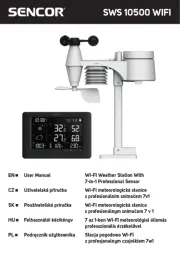
29 Juli 2025
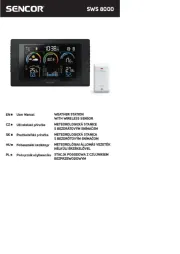
29 Juli 2025
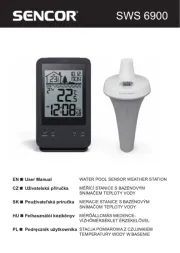
29 Juli 2025
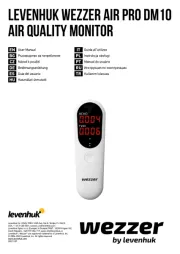
15 Juli 2025
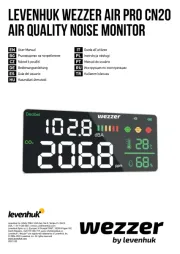
15 Juli 2025
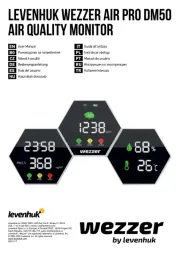
14 Juli 2025
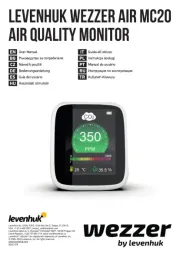
14 Juli 2025
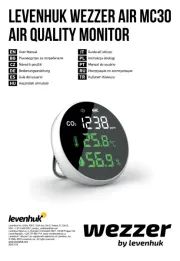
14 Juli 2025
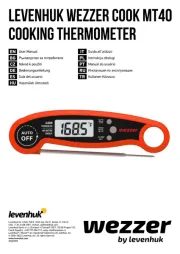
14 Juli 2025
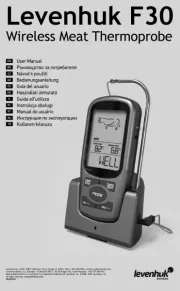
14 Juli 2025